How Sandy Hook Elementary's Architect Is Designing a Safer School
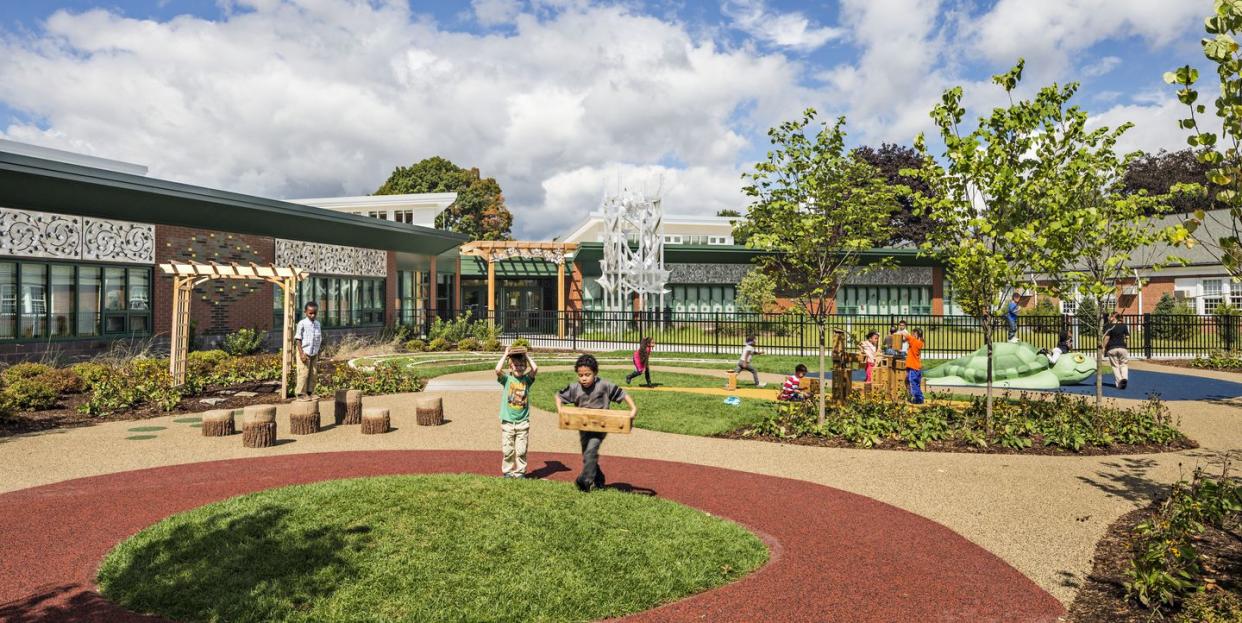
As Jay Brotman sees it, a school is much more than just a place kids go to learn reading and math. "School touches everybody," the architect tells House Beautiful. "There are very few parts of our society that touch everybody in that way." And it's that element that Brotman seeks to emphasize in the school projects he works on—and there have been many. A managing Partner at New Haven-based Svigals + Partners, the architect has been designing schools for some 25 years. His firm's most famous project is undoubtedly the $50 million redesign of Sandy Hook Elementary school, which was the site of the infamous shooting in 2012. Brotman has testified before the Federal Commission on School Safety about school design and is considered an expert in the field. Last month, Brotman spoke on a panel at the U.S. Conference of Mayors about creating learning environments that are safe—but not focused solely on safety. Ahead of the event, House Beautiful talked to Brotman about just how design can make for better schools—and better work, live, and play environments for all people. Here's what he had to say.
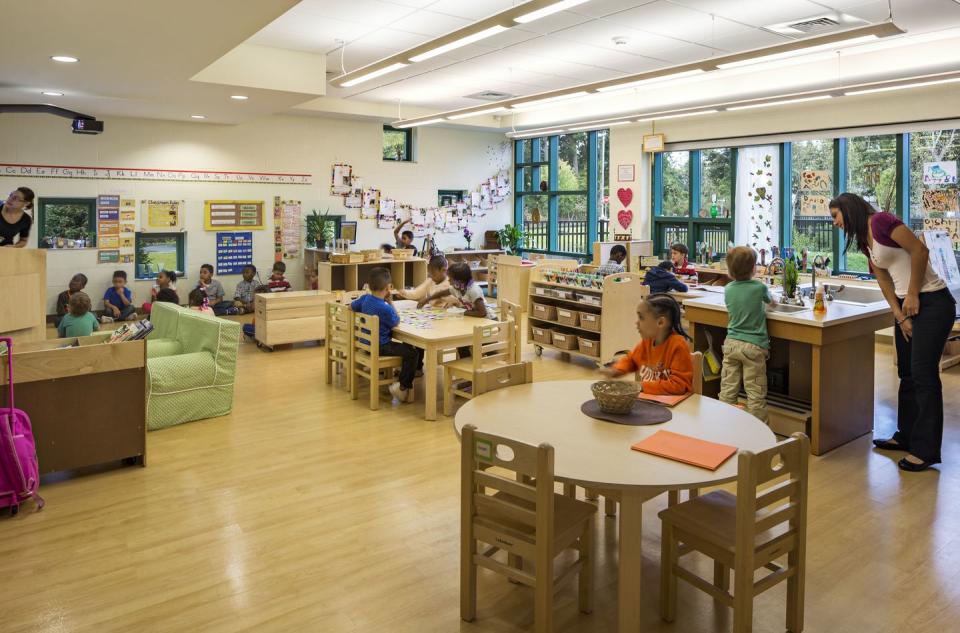
Design for the Future
The first school Brotman ever worked on happened to be one in his own New Haven neighborhood, the first school renovation in the city in decades. Renovating it turned out to be both a sort of look into a time capsule of education and a challenge to look to the future of learning.
"Working on these older schools gives you a sense of what school was like in the 30s, 40s, and 50s," the architect says. At those times a lot of schools were built so that the children went home for lunch. Everybody sat in a row in the classroom, there were very few specialty rooms, very few auditoriums. Now a school has to do so many more things and that’s what we’ve had to build for."

Newfound popularity in group learning, better understanding of learning differences, and changes in technology call for an entirely different design. "We have to design the building to allow for learning anywhere in the building and learning in different modes, learning from each other, not just the teachers," Brotman says. "There’s a huge range of issues architects now have to look at and evaluate and prioritize in order to create a school that will work for today and be flexible enough to be changed and modified and fit the teaching styles that may be discovered in the decades to come."
Involve the Community
The best way to both completely understand a school's needs and ensure its longevity is, undeniably, to involve the community surrounding it, Brotman says. At that first project in New Haven, Svigals + Partners developed a school-based building advisory committee (SBBAC), a group of community members whose counsel they sought throughout the planning process. Since then, the firm has created SBBACs for every school project it's done, in urban, suburban, high-income, and low-income neighborhoods—to stunning results. "Bringing the community into the decision making process re-connects them to their school," explains Brotman. "Once the school is built, they become these ambassadors. If any graffiti shows up—though it rarely does—neighbors show up to fix it. They maintain the school, they police the school, because they understand they were a part of it."
Safety Doesn't Come First
It's worth noting that, despite the fact that it's ostensibly the subject of this piece, Brotman and I are deep into our conversation before the subject of safety comes up. There's a reason for that: "Obviously safety has risen to the top of what's considered and addressed but when we look at a school design, either new or renovated, we don’t start with that," says the architect. We start with the issues we just discussed: creating a nurturing environment where students can learn."
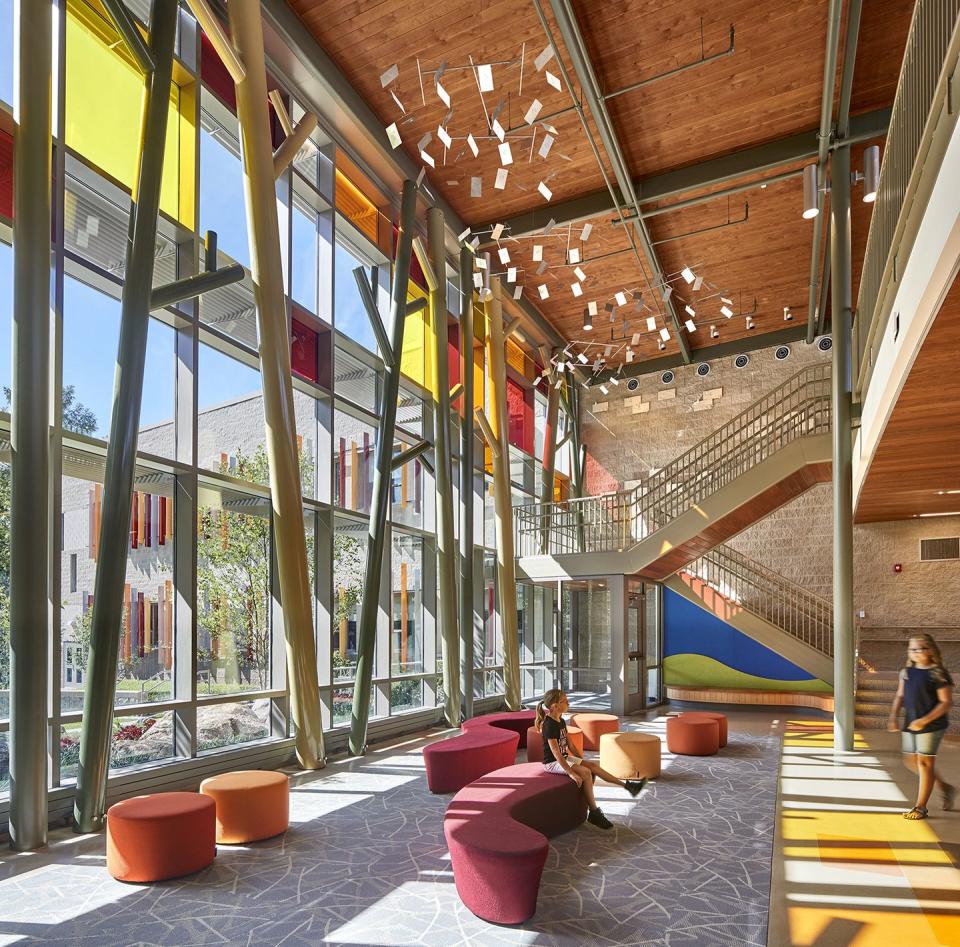
As architects, Brotman explains, "the main goal is to create a nurturing and inspiring space and then you weave in the security components."
"That's what we were able to do very successfully at Sandy Hook," he says of the new campus, which opened in 2016. Svigals + Partners worked with their SBBAC (the largest ever at about 50 people) through a variety of workshops to determine the best learning environment for their kids. "You don't start with 'how can I make it the safest?' You start with' what is the best environment?'" Brotman says.
"We know it’s safe and secure because we understand the principles that make it safe and secure, but when you approach the school, it looks like a school. It looks like an inviting, community asset."
Devise Creative Security
Behind this kind of hidden security is a deeply strategic design—devised in partnership with numerous consultants, from landscape architects to structural engineers to security experts. "We like to use one thing and get more than one solution," Brotman says of his firm's designs, which often follow the principles of crime prevention through environmental design (CPTED), a method of influencing behavior through surroundings.
Take, for example, the rain garden outside Sandy Hook. "One principle of CPTED is controlling access to the facility, so having a standoff area between where people exit their cars and get into the building," Brotman explains. "That’s where the rain garden comes in: New England is a great place for rain and we don’t want to just collect it on the roof and drain it, so we retain water on our site and let it slowly trickle out or let it re-infiltrate into the soil. That was a need and the security was a need so we combined the two and created this rain garden that collects all the water from the roof and instead of it being just drained, we put natural plantings in there so now in addition to security it’s this beautiful natural space."
Students enter the school across bridges over the rain garden. "They don’t even know its a security feature," Brotman says. Plus, he points out, "it’s a huge education tool because they can see rain water in its natural cycle, see plants change over the years, see the animals come and go—they do experiments in there."
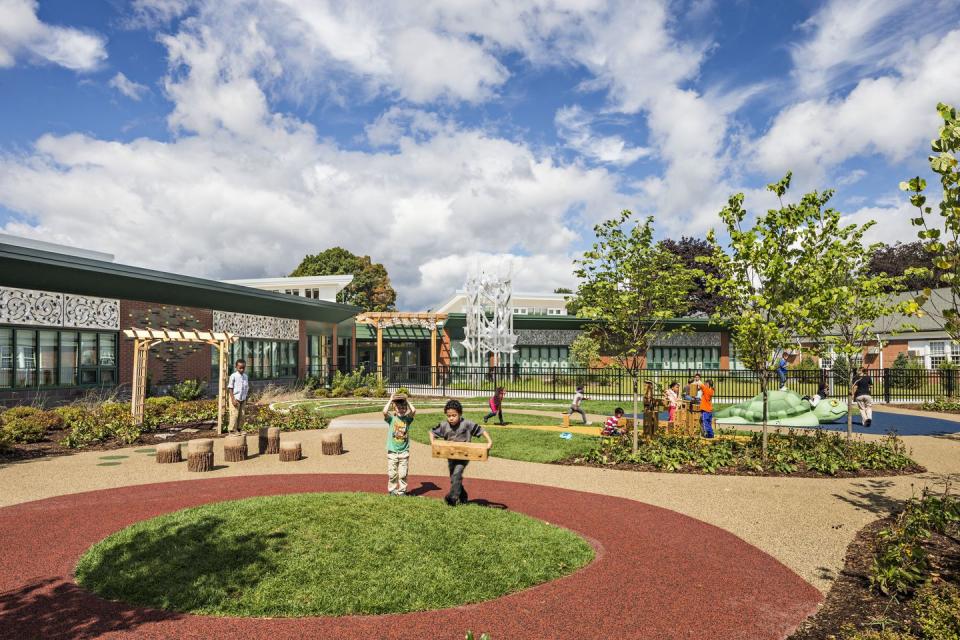
Incorporate Nature
Plus, nature is exceedingly important to all aspects of mental and physical well-being—both for students and adults. "One thing that doesn’t get enough attention is the importance of a natural, biophilic environment for students," Brotman says. "What we have learned is that similar to plants, animals—people need daylight and fresh air and access to the outside in order to really function at their top level. If a child is stuck in a room without windows, they’re not going to do well." Brotman's team makes sure that every space in a school has some view outside—even if it's through another room—and incorporates natural elements in its interior design (like acoustic panels shaped like tree leaves).
Design Against Bullying
The more open spaces resulting from biophilic design have another purpose, too: they can reduce instances of bullying. In addition to the proven effects on mood, having open spaces can prevent bullying triggers. "We know if there’s more glass and fewer places to hide, there will be less bullying and micro-aggressions, which affects many more students in our schools than these major tragedies," Brotman says. "So we design a school that does that."
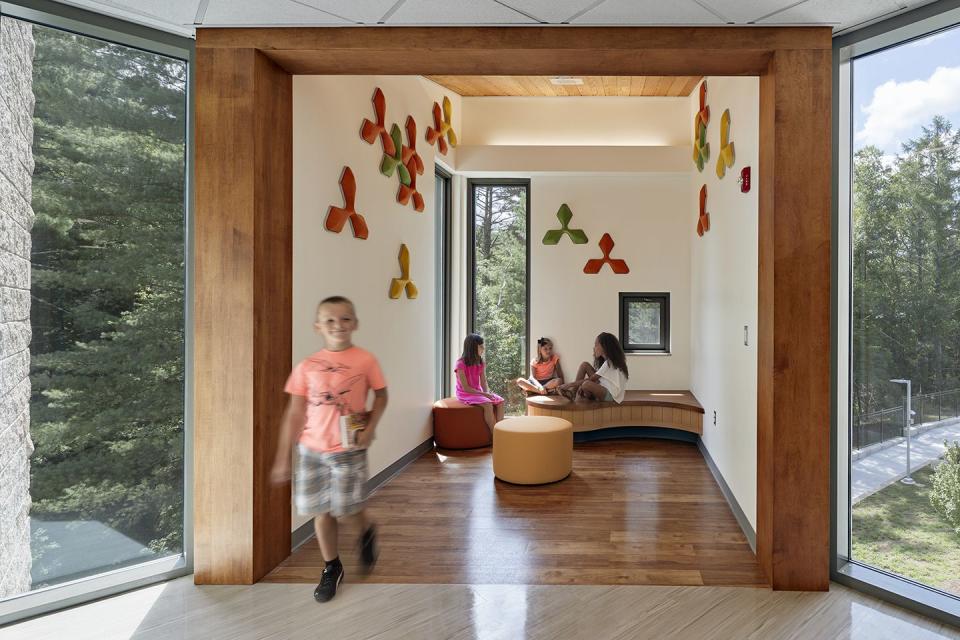
Listen to Teachers
Central to all of Svigals + Partners's school designs is a communication with teachers, who often serve on the SBBAC and serve as kind of de-facto child-development consultants. "These are people in the midst of working with children," Brotman says. "We interview them to understand how, in their particular school district, they want to teach and the programs they want to see. So we're able to craft a design that meets their goals, because they're on a day by day basis seeing these child psychology issues."
They're also privy to the many successes in school: "What you have to remember in the face of these tragedies that our schools are successful," Brotman stresses. "99% are healthy members of society; it’s the small percentage that isn’t. That said, "we do always want to make it better," he says. "That’s something I’m personally trying to do every day."
('You Might Also Like',)

